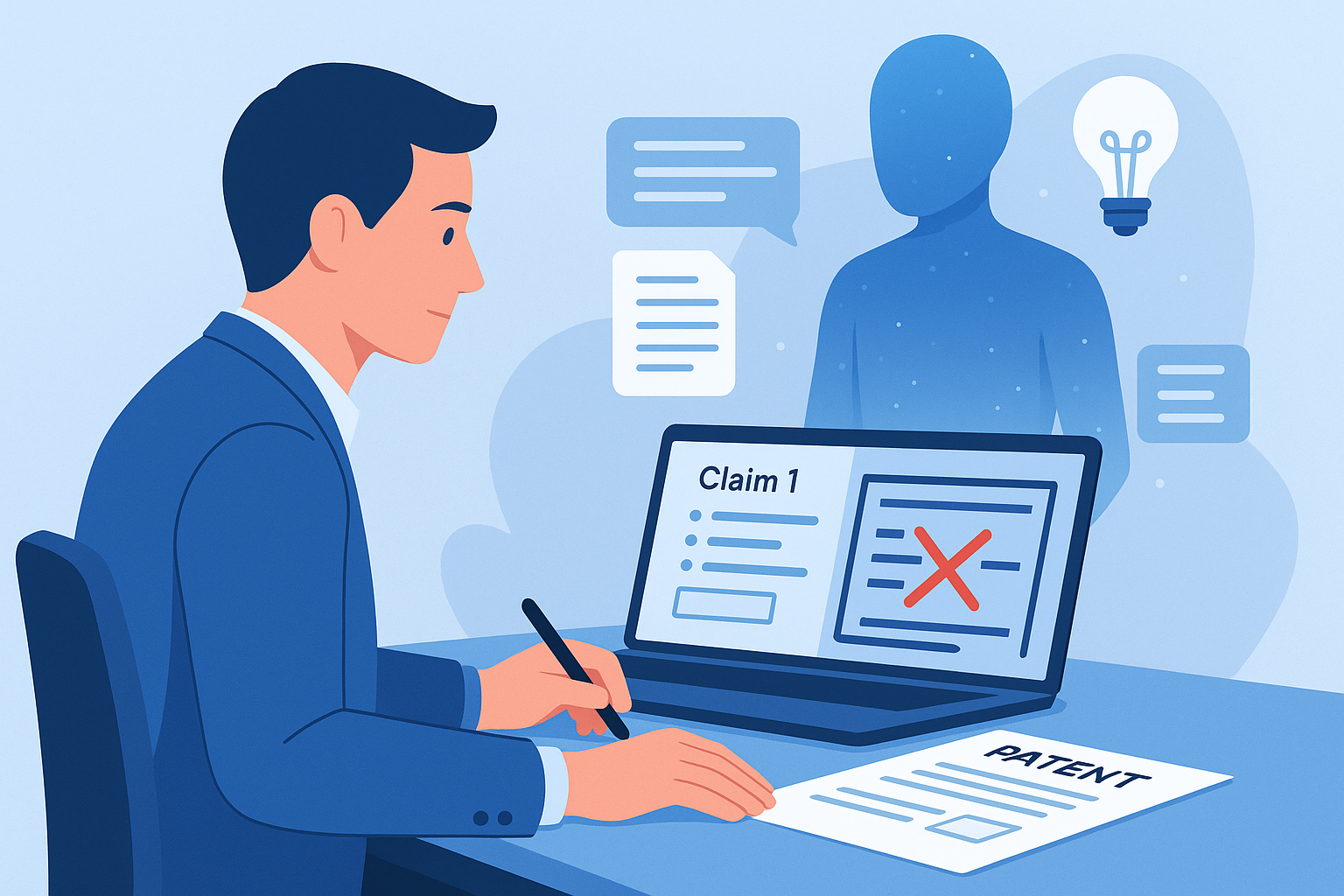How to Avoid §102 Rejections with AI-Powered Drafting
A great idea needs more than inspiration—a strong patent claim is what keeps competitors out. But too many utility patent applications are shot down by 35 U.S.C. §102 ("novelty rejection") because one single prior art reference matches every element of the claim.
With more inventors and startups in the game, avoiding §102 rejections takes both technical detail and smart searching.
Here's how to write claims that actually stand up—and how AI like InventGenie can help you do it.
What Actually Gets You a §102 Rejection?
A §102 rejection happens when the examiner finds one document—a patent, publication, or application—that matches every element of your claim, either word-for-word or in meaning.
In plain English:
If your main claim reads:
"A portable sensor comprising a battery, a wireless module, and a temperature-sensing element..."
And the examiner finds any prior art describing those same parts, in a similar setup, you're out.
Most common reasons:
- Too broad: Claiming generic combos ("a mobile app that tracks fitness data").
- Too vague: Generic wording that could fit dozens of earlier inventions.
- Echoing the background: Simply restating known tech, not what's actually unique.
Quick tip: Novelty isn't about how you describe it, but whether your idea is actually different—and whether you've claimed the difference.
What Makes a Claim "Novel" and Defensible?
Your independent claims (usually Claim 1) set the outer boundary. These are what examiners attack first with prior art.
Weak, Overbroad Claim:
"A mobile app that connects to a wearable device and tracks fitness data."
Stronger, More Defensible Claim:
"A mobile application that dynamically adjusts heart rate variability thresholds for alerting users based on time-of-day and real-time hydration levels sensed via electrochemical impedance in a wearable device..."
Notice the difference:
- The second claim isn't just longer—it nails down what's unique (the functional link, the real-time data, the sensor type).
- The examiner now has to find all those elements together, not just a generic app.
How AI Finds (and Flags) Novelty Risks Before You File
Even top patent professionals miss things in manual searches. AI changes the game:
InventGenie's AI Prior Art Engine:
- Goes past keywords: Uses semantic vector search—finds meaning, not just matching words.
- Breaks down your claim: Pulls out functional blocks, then looks for each in the art.
- Shows you the risk: Flags which elements are too close, and how risky the match is.
Example:
An inventor claims a "rotating UV disinfection chamber for shoes." A standard keyword search finds nothing. InventGenie's AI surfaces a 2018 UV sanitation drawer patent—functionally similar.Result: The user tweaks the claim to focus on "motion-triggered activation" and unique airflow design—claim survives.
Smart Claim Drafting: Turn Rejections into Stronger Patents
The process:
- Run a prior art scan: Get flagged risk areas before you file.
- Revise claims: Focus on what's unique—structure, function, relationships.
- Add dependent claims: Build fallback positions (specific sensors, materials, methods).
- Check claim support: Map terms back to your drawings/specs for §112 support.
AI makes this faster:
- Auto-suggests dependent claims (alternate setups, special cases).
- Highlights weak language and proposes fixes.
- Ensures everything lines up—claim, spec, drawings—no gaps for an examiner to attack.
Example Upgrade:
Before:
"An energy harvesting shoe insole with piezoelectric sensors."
After AI review:
"An energy harvesting insole comprising a multi-layer structure with embedded piezoelectric sheets, wherein a waveform-based feedback mechanism adjusts gait analytics for injury prediction."
Result: More unique, more defensible, clearer benefit.
Don't File Blind: Scan Your Claims with InventGenie
Before you file, before you pay for a patent lawyer—run your claim through InventGenie's AI Prior Art Scan. Catch novelty risks early, refine your claim, and save thousands in prosecution headaches.
- Context-aware prior art scanning
- Technical claim suggestions and alternatives
- Novelty risk scoring, color-coded for speed
- Real-time feedback—no patent law degree needed
Final Takeaway: The Winning Patent Isn't Always the Broadest—It's the One That Survives
- Novelty isn't a guessing game—AI gives you the data.
- Strong claims are specific, technical, and backed up in your spec.
- InventGenie makes the process faster and smarter—giving inventors and attorneys a clear edge.
